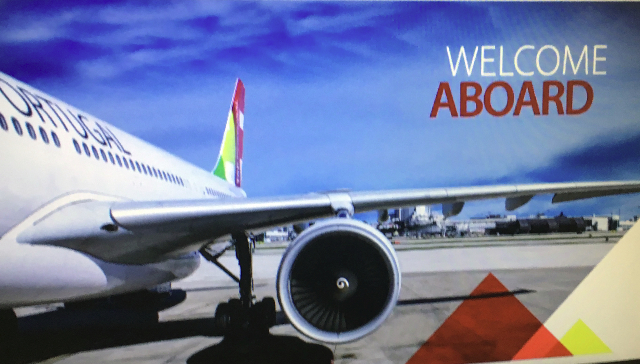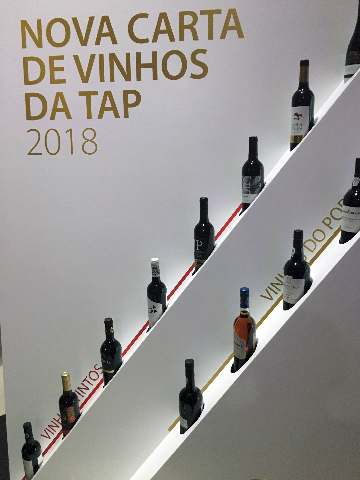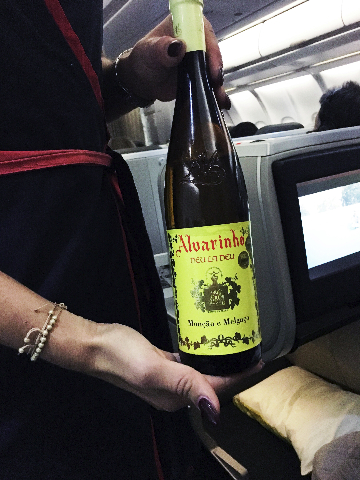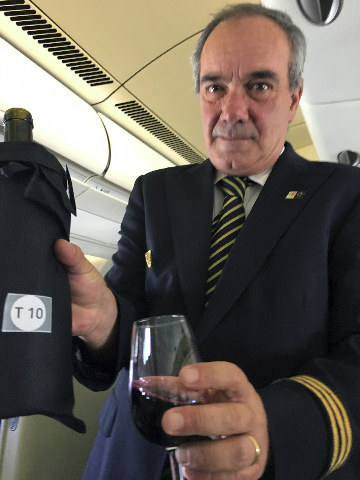Judging Wine At 40,000 Feet
Sampling 600 Wines For TAP Airlines
By: Philip S. Kampe - Dec 11, 2017
Did you know that if you fly east, you fly at an odd number altitude wise, for example, 39,000 feet, while, when you fly west, you fly at an even number, maybe 38,000 or 40, 000 feet, The pilot needs to find the sweet spot where the air is not thin (always at higher altitudes) and where there is less drag on the plane, so less fuel is needed to reach the desired speed (always at lower altitudes),
Desired altitudes for commercial flights range from 35,000 feet to 42,000 feet.
What happens to your palate when you drink wine at those altitudes?
Aircraft cabins are extremely dry and the drier you get, the drier your olfactory system is, which translates into your inability to translate complexity in wines. The wines you know won’t be totally unrecognizable, but, they will be new wines, in a sense, on your compromised palate. Your nasal passages are naturally dry in the air, which throws your aroma and taste buds off course. Add background noise, biorhythms, time change and flight vibration add to the gamut. You are really not yourself when you sample wine on flights.
To relieve the stress of how you will perceive the wines taste, TAP airlines has a crew of ten wine experts who take all of the misguidance into account when sampling Portuguese wines. The purpose is to establish those few that will make the cut for tasting onboard.
As a member of the TAP blind wine tasting team, made up of Portuguese and Brazilian wine experts, the sampling of the wines was tedious.
In a matter of three days, our team sampled over six hundred wines-all Portuguese-on the ground. The top scoring fifty vote getters, twenty-five (25) white and twenty-five (25) red were then sampled in the air This occured on a six hour flight to and from Lisbon and Prague.
Each was judged and given a score. These wines were the final cut.
There a few lessons to be learned when tasting wine at altitudes close to 40,000 feet.
First, hydrate yourself when drinking wine. A simple rule is one glass of water for each glass of wine that you drink. Yes, dehydration coupled with alcohol is avoidable.
Two, avoid tannins. Tannins tend to become over-exaggerated in the air.
Three, wines with concentrated fruit and’ New World’ ripeness tend to be the ‘go to’ airline wines.
Four, bottle-aged reds that are tannin free work well.
Five, sparkling wine, only made in the traditional methode champenoise style fare well.
Six, let your red wine rest a few minutes, to warm up, before sampling.
Seven, always consider the dryness of the air aboard an airliner and the low pressure in the airplane cabin. These conditions combine to disrupt taste buds that focus on salt and sweetness but don’t affect spicy, bitter, or sour tastes.
Eight, wine doesn’t change flavors at high altitudes,however, our palate changes due to the re-cycling of cabin air.
All in all, TAP Airlines puts in due diligence before selecting wines for transatlantic flights.
Visit www.TAP.com to learn more.




